The SpaceX Falcon 9’s second stage engine has completed its burn. Standby for confirmation of Crew Dragon spacecraft separation.
Falcon 9 Performing Well
With two minutes remaining in the SpaceX Falcon 9 rocket’s burn, the rocket is on its proper trajectory as it heads downrange, away from NASA’s Kennedy Space Center.
MECO; Stage 2 Burn Underway
Main engine cutoff! The nine Merlin engines powering the SpaceX Falcon 9 rocket’s first stage cut off as planned and the first stage separated from the vehicle seconds later.
The second stage’s single Merlin vacuum engine has started its burn.
LIFTOFF!
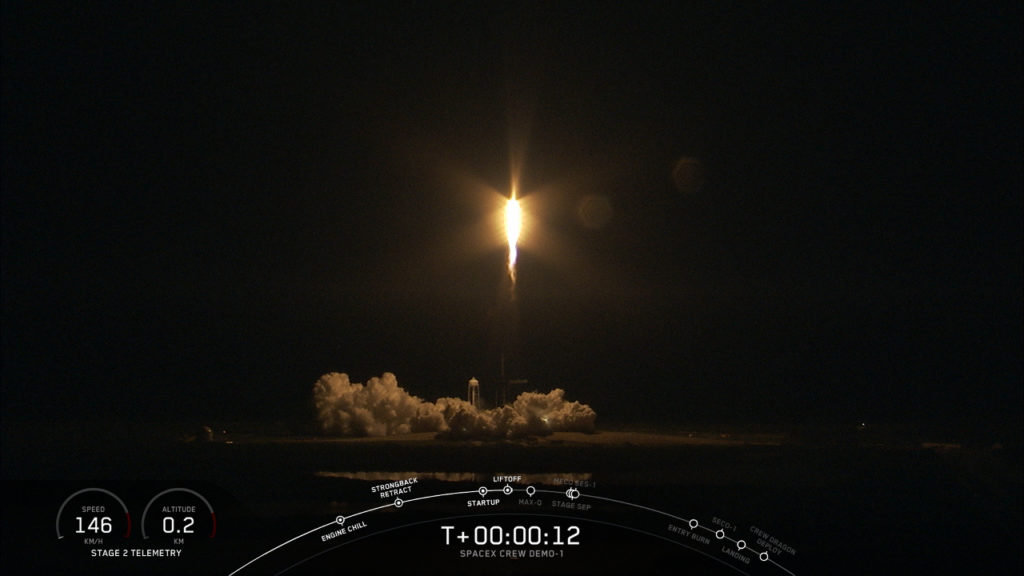 Liftoff of the SpaceX Falcon 9 rocket carrying the company’s Crew Dragon spacecraft on its historic inaugural flight to the International Space Station. The uncrewed Demo-1 flight test is off to a spectacular start as the rocket quickly climbs up and away from Launch Complex 39A at NASA’s Kennedy Space Center in Florida.
Liftoff of the SpaceX Falcon 9 rocket carrying the company’s Crew Dragon spacecraft on its historic inaugural flight to the International Space Station. The uncrewed Demo-1 flight test is off to a spectacular start as the rocket quickly climbs up and away from Launch Complex 39A at NASA’s Kennedy Space Center in Florida.
The nine Merlin engines on Falcon 9’s first stage will burn through a million pounds of propellant during the next three minutes.
About one minute after liftoff, the rocket will reach peak aerodynamic pressure, known as Max Q. Main engine cutoff (MECO) follows at two minutes, 35 seconds into the flight, then the first stage will separate from the second stage. The single Merlin vacuum engine on the second stage will ignite two minutes, 42 seconds after launch.
SpaceX will attempt to land the first stage on the company’s autonomous drone ship, “Of Course I Still Love You.”
Three Minutes and Counting
The SpaceX Falcon 9 rocket and Crew Dragon spacecraft are ready for launch three minutes from now at 2:49 a.m. EST.
Countdown Update
The weather and winds continue to cooperate as NASA and SpaceX prepare for the liftoff of the company’s Falcon 9 rocket and Crew Dragon spacecraft on the Demo-1 mission, an uncrewed flight to fully demonstrate this new crew transportation system. Launch remains targeted for 2:49 a.m. from Launch Complex 39A at NASA’s Kennedy Space Center in Florida. The Eastern Range is “go” as well, and both of the rocket’s stages are almost fully fueled.
The International Space Station will be flying at an altitude of 258 statute miles over central Iraq at the time the SpaceX Falcon 9 lifts off from Launch Complex 39A.
Historic Launch Complex 39A
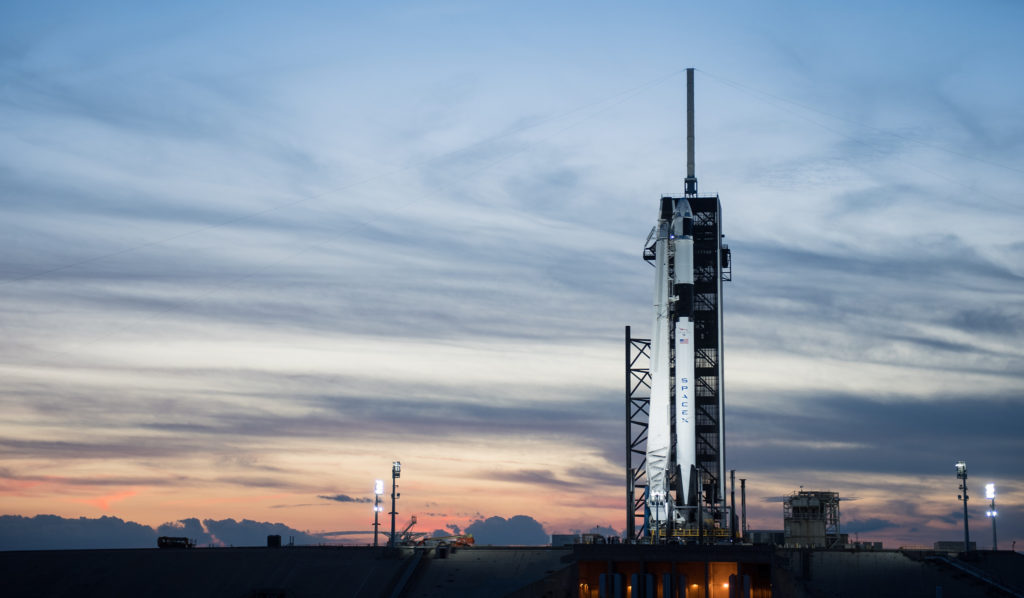
Originally built for the massive Saturn V rockets that sent astronauts on Apollo missions to the Moon, Launch Complex 39A also served as one of the two launch pads used by the space shuttle. Between Apollo, Skylab, Apollo-Soyuz and the space shuttle, this launch pad has been the starting point for many of the nation’s most challenging and inspiring missions.
In 2014, SpaceX signed a property agreement with NASA for use and operation of the launch complex for 20 years, and the company modified the facility to prepare for the processing and launch of its Falcon 9 and Falcon Heavy rockets.
To learn more about Launch Complex 39A’s fascinating past and the upgrades that prepared it for today’s launch, click here.
Uncrewed Flight Test Will Pave the Way for SpaceX Crewed Mission
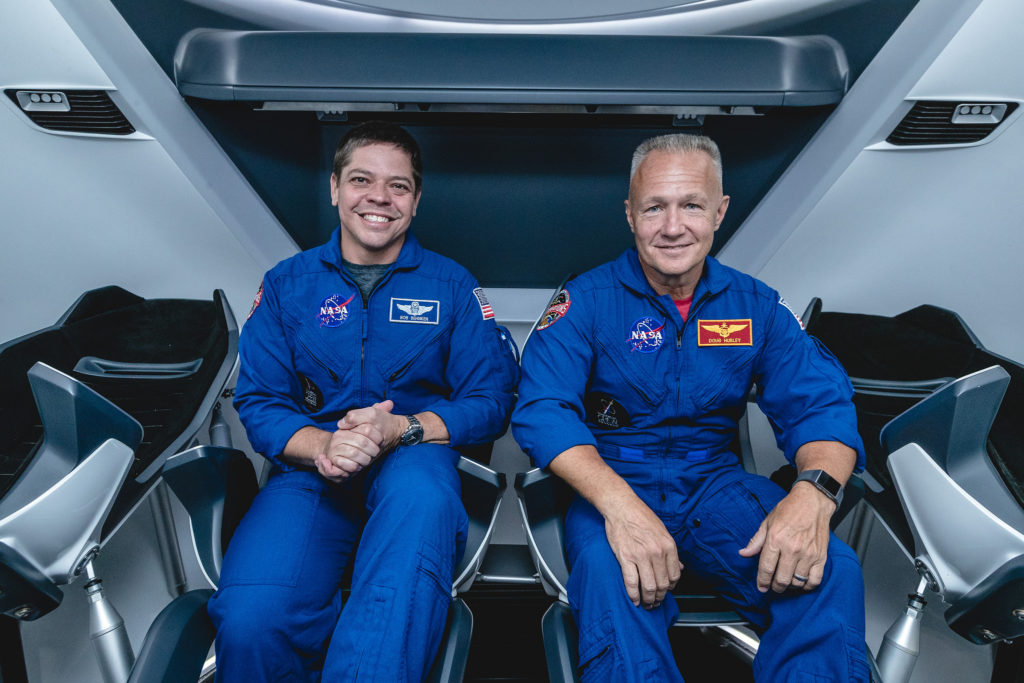
SpaceX’s Demo-1 uncrewed flight test of its Crew Dragon spacecraft, targeted to lift off at 2:49 a.m. atop a Falcon 9 rocket from Launch Complex 39A at Kennedy Space Center in Florida, will be the first launch for NASA’s Commercial Crew Program. A successful Demo-1 flight test will pave the way for SpaceX’s Demo-2 flight test with two NASA astronauts onboard, targeted for July 2019. Demo-1 will mark Crew Dragon’s first flight to the International Space Station.
NASA has partnered with Boeing and SpaceX to return human spaceflight launches to the space station from U.S. soil, a feat that has not been accomplished since STS-135 — the final mission of the Space Shuttle Program — in July 2011.
Veteran astronauts Bob Behnken and Doug Hurley are crewmates for Demo-2 and have trained extensively for the mission. Both have been intimately involved in Crew Dragon’s development, providing feedback and helping SpaceX check out crew interfaces at every phase of testing.
A colonel in the U.S. Air Force, Behnken is a veteran of two space shuttle missions — STS-123 in March 2008 and STS-130 in February 2010. He has logged more than 708 hours in space, including more than 37 hours on six spacewalks. Hurley piloted space shuttle missions STS-127 in July 2009 and STS-135 in July 2011. The retired U.S. Marine Corps colonel has logged more than 680 hours in space.
Behnken and Hurley are here at Kennedy this morning to see the historic liftoff of Demo-1 liftoff.
Data from Demo-1 will help NASA confirm that SpaceX’s Crew Dragon and Falcon 9 systems can safely carry crew to the space station and return them home.
‘Our Destiny Lies Above Us’
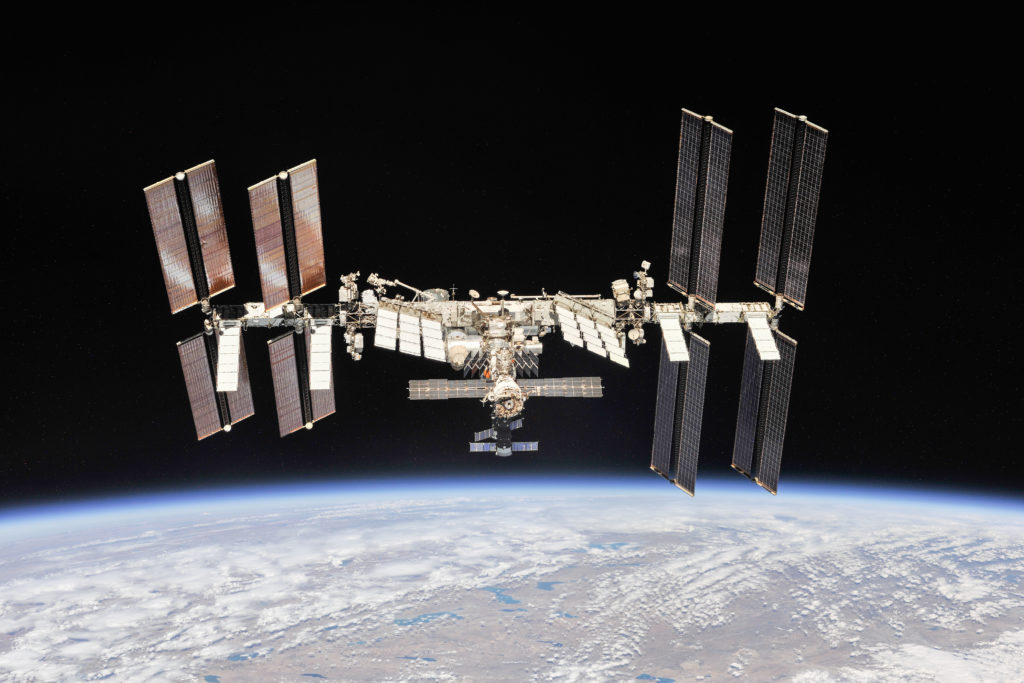
NASA’s Commercial Crew Program is poised to return America’s capability to launch U.S. astronauts from our nation’s soil to the International Space Station.
Falcon 9 Propellant Loading Operations Begin
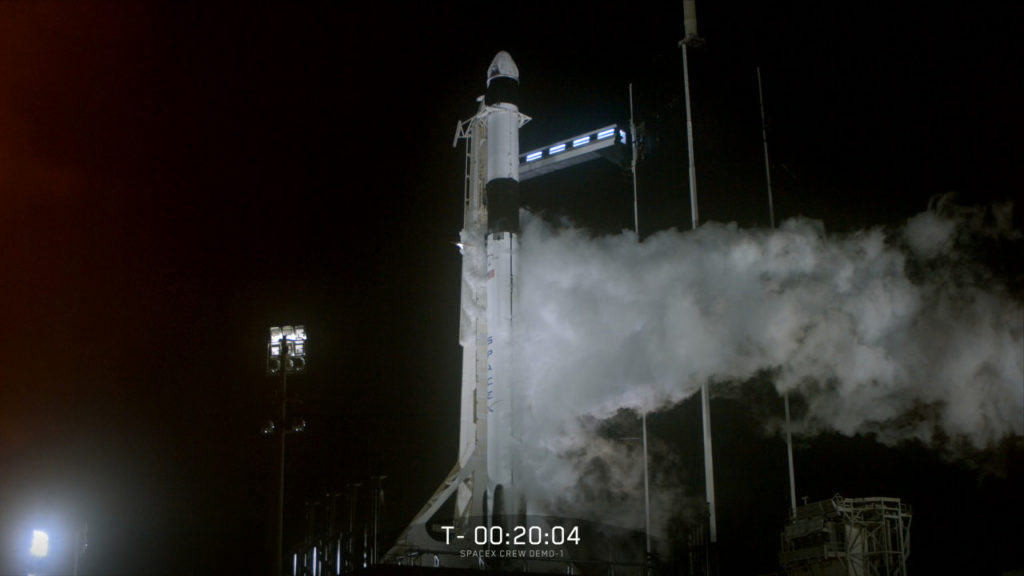
Launch preparations continue at Kennedy Space Center’s Launch Complex 39A, where a SpaceX Falcon 9 rocket and Crew Dragon spacecraft await liftoff at 2:49 a.m. EST on the company’s Demo-1 mission to the International Space Station.
Propellant loading operations are beginning. RP-1, a rocket-grade kerosene, is pumped into both of the Falcon 9 rocket’s stages while the first stage is loaded with liquid oxygen (LOX). Second-stage LOX loading begins later, about 16 minutes prior to liftoff.
